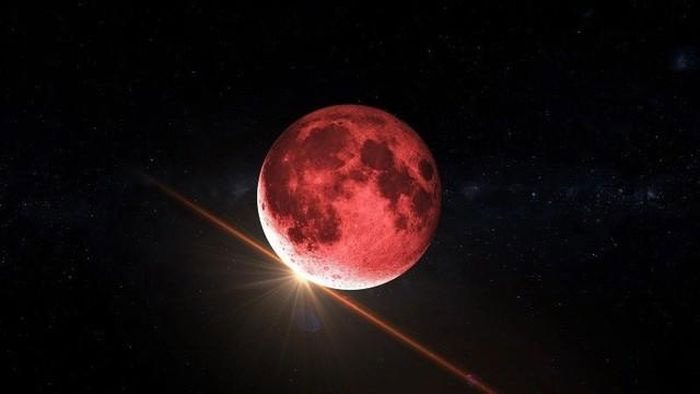A lunar eclipse is an astronomical phenomenon that occurs when the Moon moves into the Earth’s shadow, opposite the Sun. This can only happen when the Sun, Earth, and Moon are aligned or approximately aligned, with the Earth in the middle.
Favorable Weather for Observing the Blood Moon on November 27
According to the Hanoi Astronomy Association (HAS), on November 27, the Moon will be positioned opposite the Earth in relation to the Sun, and its surface will be fully illuminated. This phase will occur at 19:17 Vietnam time. This full moon is referred to as the Beaver Moon by early Native American tribes because it is the time of year to set beaver traps before the swamps and rivers freeze. It is also known as the Frost Moon and the Dark Moon.

The Moon turns red, also known as the Blood Moon, is a fascinating astronomical phenomenon.
The full moon phenomenon occurs when our planet Earth is “sandwiched” precisely between the Sun and the Moon. This unique alignment ensures that the entire surface of the Moon facing us shines brightly under sunlight. Due to the Moon’s orbit around the Earth, the angle of sunlight hitting the Moon’s surface and reflecting back to our planet changes, creating different phases of the Moon.
Although a full moon happens only at the exact moment when the Earth, Moon, and Sun form a perfect alignment, to our eyes, the Moon appears full for about three days. A lunar eclipse is an astronomical event when the Moon enters the Earth’s shadow cone, opposite the Sun. This can only occur when the Sun, Earth, and Moon are aligned or approximately aligned, with the Earth in the middle. Therefore, a lunar eclipse can only happen on full moon days.
Weather conditions are considered a decisive factor for observation. Many areas across the country have missed previous Blood Moon observations due to cloudy skies and thunderstorms. However, this time, the conditions for observing the Blood Moon are expected to be quite favorable nationwide.
On November 27, the weather in the North will have scattered rain, with fog in some places early in the morning, and sunny weather in the afternoon. Nights and mornings will be chilly. By the evening of November 27, heavy rain in the Central region will gradually decrease, while the Central Highlands and Southern regions will experience scattered showers and thunderstorms, with localized moderate to heavy rain.
Unlike solar eclipses, lunar eclipses can be fully observed with the naked eye, and it is even more interesting with the aid of binoculars or telescopes. Along with checking the weather, viewers should also choose open locations with wide views to the East, selecting areas with minimal artificial light and air pollution.
Full Moon Calendar for 2024
According to the Hanoi Astronomy Association, the Moon rises from the eastern half of the horizon and sets in the western half due to the Earth’s rotation, which is the phenomenon of the full moon. In 2024, the full moon dates are January 25, February 24, March 25, April 23, May 23, June 21, July 21, August 19, September 17, October 17, November 15, and December 15. Each full moon has a different name. These names primarily originate from a combination of observational events, cultural practices, agriculture, and natural phenomena related to the Moon, allowing people not only to predict seasonal changes but also to track the passage of time.
Supermoon is a term reserved for a full moon that coincides with the perigee of the Moon, the closest point of the Moon to Earth in its orbit. This proximity makes the full moon appear larger and unusually bright. For a full moon to receive the Supermoon label, it must be within 90% of its closest distance to Earth.
Blue Moon is the second full moon in a month that has two full moons. This phenomenon appears in our sky approximately once every 2.7 years. Although the term suggests a color, the blue moon does not actually appear blue. Rarely, atmospheric conditions such as recent volcanic eruptions can cause the moon to take on a slightly blue hue, but this color is not associated with the term.
The Harvest Moon is the full moon closest to the autumn equinox each year, typically in September, and is often renowned for its distinctive orange hue. This full moon rises near sunset and sets near sunrise, providing bright moonlight for many hours. The Harvest Moon occurred closest to September 29, 2023.


















































